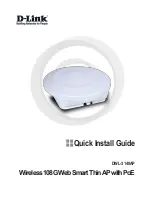
ANNA-B112 - System integration manual
UBX-18009821 - R09
Design-in
Page 45 of 66
C1-Public
3.4.2
Serial peripheral interface (SPI)
The layout of the SPI bus should be done so that noise injection and cross talk are avoided.
3.4.3
I
2
C interface
The layout of the I2C bus should be done so that noise injection and cross talk are avoided.
NFC interface
⚠
Ensure that the NFC pins are configured correctly. Connecting an NFC antenna to the pins
configured as GPIO will damage the module.
The NFC antenna coil must be connected differentially between NFC1 and NFC2 pins of the device.
Two external capacitors should be used to tune the resonance of the antenna circuit to 13.56 MHz.
The required tuning capacitor value is given by the below equations: An antenna inductance of Lant =
2
μ
H will give tuning capacitors in the range of 130 pF on each pin. For good performance, match the
total capacitance on NFC1 and NFC2.
The ANNA-B112 module have been tested with a 3x3 cm PCB trace antenna, so it is recommended to
keep an antenna design close to these measurements. You can still use a smaller or larger antenna as
long as it is tuned to resonate at 13.56 MHz. In order to comply with European regulatory demands,
the NFC antenna must be placed in such a way that the space between the ANNA-B112 module and
the remote NFC transmitter is always within 3 meters during transmission.
Figure 27: NFC antenna design
𝐶𝐶
𝑡𝑡𝑡𝑡𝑡𝑡𝑡𝑡
′
=
1
(2
𝜋𝜋
× 13.56
𝑀𝑀𝑀𝑀𝑀𝑀
)
2
𝐿𝐿
𝑎𝑎𝑡𝑡𝑡𝑡
𝑤𝑤𝑤𝑤𝑤𝑤𝑤𝑤
𝐶𝐶
𝑡𝑡𝑡𝑡𝑡𝑡𝑡𝑡
′
=
1
2 ×
�𝐶𝐶
𝑝𝑝
+
𝐶𝐶
𝑖𝑖𝑡𝑡𝑡𝑡
+
𝐶𝐶
𝑡𝑡𝑡𝑡𝑡𝑡𝑡𝑡
�
𝐶𝐶
𝑡𝑡𝑡𝑡𝑡𝑡𝑡𝑡
=
2
(2
𝜋𝜋
× 13.56
𝑀𝑀𝑀𝑀𝑀𝑀
)
2
𝐿𝐿
𝑎𝑎𝑡𝑡𝑡𝑡
− 𝐶𝐶
𝑝𝑝
− 𝐶𝐶
𝑖𝑖𝑡𝑡𝑡𝑡
3.5.1
Battery protection
If the antenna is exposed to a strong NFC field, current may flow in the opposite direction on the
supply due to parasitic diodes and ESD structures.
If the battery used does not tolerate return current, a series diode must be placed between the battery
and the device in order to protect the battery.
















































